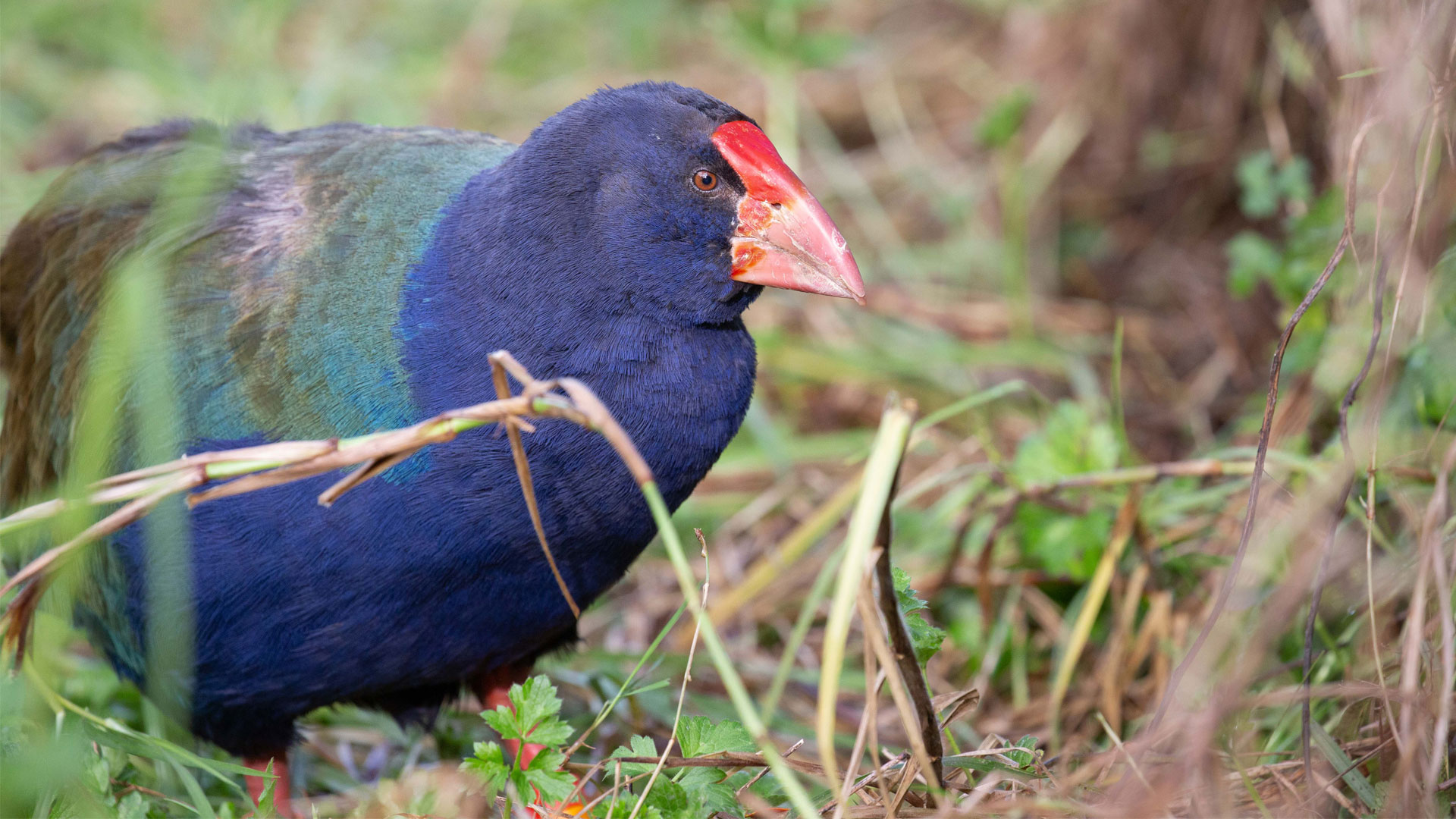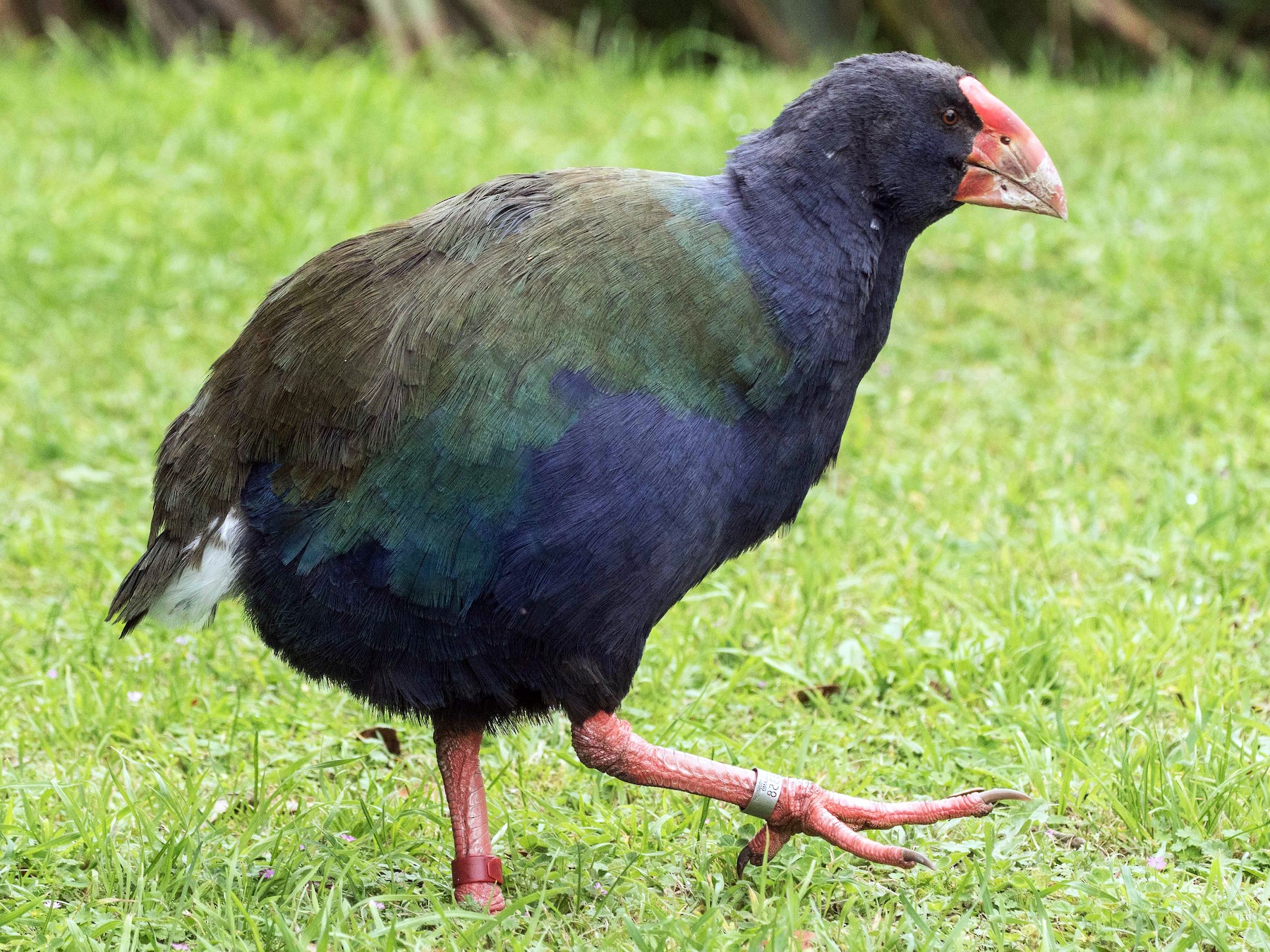Tā Tipene O’Regan, 87 years old, leaned into his carved walking stick and reached down to a large wooden box. He paused a second, then slowly lifted the lid. Out shot the hefty body of a bright turquoise bird, legs windmilling, launching from its cage like a football from a slingshot.

“I am now largely blind, but I still saw them,” O’Regan says: a flash of blue feathers and bright red legs racing for the tussocks.
That streak of colour was the takahē: a large, flightless bird, that was believed for decades to be extinct. Eighteen of the birds were released in the Lake Whakatipu Waimāori valley, an alpine area of New Zealand’s South Island last week, on to slopes they had not been seen roaming for about 100 years. For Ngāi Tahu, the tribe to whom the lands belong, and who faced a long legal battle for their return, it is particularly significant, marking the return to the wild of the birds that their ancestors lived alongside, in lands that they had fought to regain.

Takahē are unusual creatures. Like a number of New Zealand birds, they evolved without native land mammals surrounding them, and adapted to fill the ecosystem niches that mammals would occupy. They are flightless, stand at around 50cm tall, and live in the mountains. Their presence in Aotearoa dates back to at least the prehistoric Pleistocene era, according to fossil remains.
“They’re almost prehistoric looking,” says Tūmai Cassidy, of Ngāi Tahu. “Very broad and bold.” Front-on, their bodies can appear almost perfectly spherical – coupled with the blue-green plumage, they look like a model planet Earth perched atop two long, bright red legs.
“Someone once called us, the land of the birds that walk,” says O’Regan, a Ngāi Tahu rangatira (elder). “There are few things more beautiful than to watch these large birds galloping back into tussock lands where they haven’t walked for over a century.”
Push to eliminate pests
In New Zealand, the return of wild takahē populations marks a cautiously celebrated conservation victory, and the return of one of the world’s rarest creatures. The birds had been formally declared extinct in 1898, their already-reduced population devastated by the arrival of European settlers’ animal companions: stoats, cats, ferrets and rats. After their rediscovery in 1948, their numbers are now at about 500, growing at about 8% a year.
Initially, conservationists gathered and artificially incubated the eggs, to prevent them being eaten by predators. As they hatched, the chicks were fed and raised by workers wearing sock puppets with the birds’ distinctive red beaks. After switching to breeding the birds in captivity, the Department of Conservation (DOC) gradually introduced them to a few island sanctuaries and national parks, investing heavily in trapping and pest-elimination to try to protect the birds.
“Trapping of stoats, ferrets and feral cats has knocked down predator numbers,” said DOC Takahē recovery operations manager Deidre Vercoe. “Continuing to keep them low … is crucial.”
If the just-released pairs adjust to their new home, the hope is to release another seven birds in October and up to 10 juvenile takahē early next year. Vercoe was cautiously hopeful. “After decades of hard work to increase the takahē population, it’s rewarding to now be focusing on establishing more wild populations, but it comes with challenges – establishing new wild native species populations can take time and success is not guaranteed,” she said.
Their work to sustain takahē is part of a far wider effort in New Zealand to protect its unique, threatened birds. The country is in the midst of a national effort to wipe out its worst introduced predators – rats, possums and stoats – by 2050. As trapping efforts have expanded, rare species are being re-introduced outside sanctuary fences: last year kiwi, the national birds, were reintroduced to wild spaces on the outskirts of the city for the first time in generations.

‘Closing the circle’
The release on Ngāi Tahu land is an attempt to establish the country’s third wild takahē population – and close collaboration between the government and the Indigenous tribe who will host them.
For Māori, to see them released into the valley, Cassidy says, was “incredibly significant – for me personally, being able to do it on my own land, just remembering and thinking about the seven generations of our people who fought to have our rights and our land returned.” The birds were valued by Ngāi Tahu ancestors – their feathers gathered and woven into cloaks.
The decline of wild takahē coincided with much of the tribe’s land being confiscated, sold or stolen. In that period, local Māori named these mountain tops Kā Whenua Roimata – the Lands of Tears, O’Regan says. Now, “I hope manuhiri [visitors] will enjoy the nearby call of the takahē radiating from the valley floor.”
For him, it is the conclusion of a story that began a lifetime earlier. When he was 10 years old, O’Regan was one of the first people to see a live takahē in more than half a century. O’Regan’s father was a keen conservationist, and after a South Island doctor spotted the birds in the Murchison mountains, he attended the second expedition to find them in 1949 – with his young son in tow. O’Regan still remembers seeing them for the first time, “being told they were extraordinary birds”.
“This past week has been closing a very long circle,” O’Regan says. “It’s an absolute joy.”






